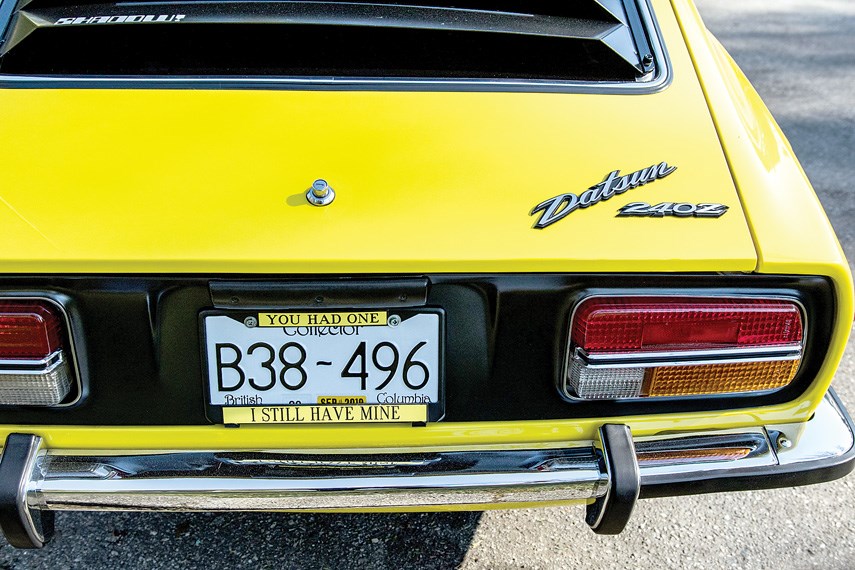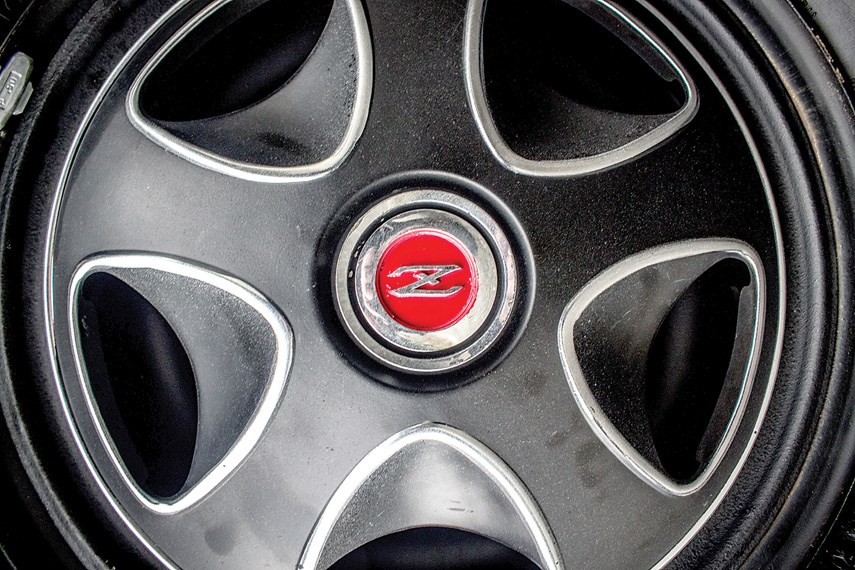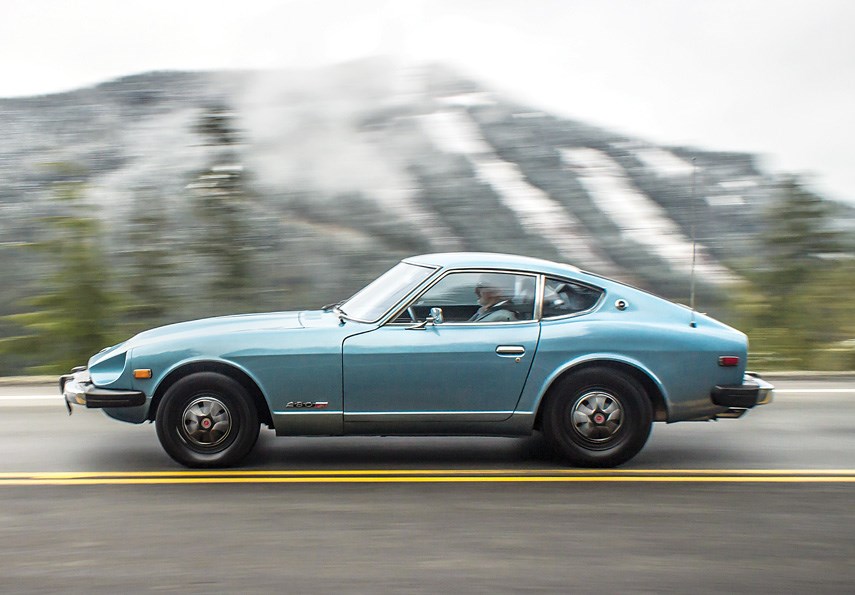Cherry blossoms bloom
A gift from Yokohama
They do good cars too.
Please enjoy this little haiku I made this morning, and then kindly go find a great curving road to flog your Datsun along before it starts raining again.
Spring! That best and fleeting season on the North Shore, when everything starts getting green again and it’s not just moss this time.
Today finds me thinking about the Datsun 240Z, which is celebrating its 50th anniversary this year. A few of them came out to the first CarBS and Coffee of the year at Cates Park on Sunday, and I particularly enjoyed one with a plate surround that said, “You had one. I still have mine.”
I arrived a bit late on the scene to have had an original Z, but I certainly live in a world where its legacy can still be seen. Today, the idea of a Japanese sports car seems perfectly reasonable: we’ve got the Nissan 370Z (the 240Z’s descendant), the mighty Nissan GT-R, the Acura NSX, the Mazda MX-5, and a whole back catalogue of hits from the last couple of decades.
But when the 240Z came on the scene in 1970 (it was first shown off in 1969 in Tokyo), it was something of a surprise. Japanese cars were, up until then, largely cheap and disposable little buzz-boxes that people bought to save on fuel. Think of what Kia’s reputation was in the early 2000s, and then think of them suddenly introducing a car that could go toe-to-toe with a Porsche.

And the 240Z could. Upon its introduction, it came with a 2.4-litre straight-six engine making 151 horsepower, weighed just over 1,000 kilograms, and came with a fully independent suspension and disc brakes up front. The contemporary Porsche 911T weighed about the same and only had 125 h.p. out of its six-cylinder engine.
More importantly, the Z wasn’t priced like a Porsche, it was priced like a four-cylinder MGB GT. For around $4,000 in the Canadian market, you could have a car that looked a bit like a Jaguar E-type, was quick on the straights and corners, and was perfectly usable every day. And it was called the Z, which is right up there with racy letters like X and R. People instantly loved them.
And, like many of the best cars, the Z came with a pretty good backstory. For one thing, it wasn’t meant to be called the Z at all, but the Fairlady, as one of the Datsun executives had seen My Fair Lady and fallen in love with the idea.
The Fairlady badge went back to the Z’s ancestors, the cheery little Datsun Roadsters. However, there was one person who knew that North Americans were going to be far less interested in buying a four-wheeled Lady than they would something called a 240Z.
That man’s name was Yutaka Katayama, or as most of his American friends called him, Mr. K.
The Western view of Japan is one of uniformity and obeisance. The Japanese seem to be unfailingly polite, and everyone forms queues and appears to do what they are told. However, every so often a renegade pops up and things get very interesting.

Mr. K was one such renegade. He was already something of an oddball, having taken his wife’s last name (she had no brothers, and this preserved the family name), and being one of only a few Japanese Christians at the time. Born Yutaka Asoh, his first experience of North Americans came when he was employed aboard a freighter that stopped in Vancouver, Victoria, and Seattle. While the ship loaded up with lumber, he traipsed around the Pacific Northwest, and apparently liked what he saw.
He began working for Nissan in 1935, survived the Second World War, and continued with the company in advertising and publicity. Katayama was quite annoying to most of the executives at Nissan because he had an unseemly obsession with speed. Japanese business culture favoured conformity, and quiet dignity.
Having got up too many noses with his desire to take Datsun racing, Mr. K was shipped off to Los Angeles to run Datsun’s fledgling export business. At the time, they sold about 1,000 cars a year, mostly cheap stuff. A review at the time once described a Datsun’s performance as “melancholy.”
Katayama loved California instantly, and fit right into the hot rod culture like a puzzle piece snapping into place. He was soon up to all kinds of antics to get Datsun’s stuffy executives to build first the 510 – which would go on to be another legend as a sort of poor man’s BMW – and then the 240Z.
It is said that Mr. K took the Fairlady badges right off the first Zs himself, chiseling them away at the shipyards. There’s no proof of this, but he was certainly responsible for making sure the 240Z would be called a Z.
Picture the annoyance of all the Nissan/Datsun executives who hoped Katayama would fall flat on his face as demand for the 240Z rapidly outstripped supply. Despite the success, they eventually managed to recall him to Japan, and for a long time only the most dedicated Datsun fans knew his story. However, the Z is now a lasting legend, and Mr. K.’s place as its father is secure.
Over the years, the Z got larger and became more of a GT car than a true sports machine, and the current one is getting a little long in the tooth. Nissan has neglected their hero car a little, letting most of the glory go to the GT-R.
Katayama himself, before he died a few years ago, mentioned that the original Miata was the closest in spirit to the Z, and he’d probably have approved of the Toyota 86 and Subaru BRZ twins. We could use a new Z, modestly powered, but filled with a joy of driving.
But then again, perhaps we might not need a new one, as so many fans seem dedicated to continuing to use their classic Zs as Mr. K intended.
Spring is here, and the cherry blossoms tremble on the trees, waiting to be swept away by the rain and wind. Their time is fleeting. So is ours. Might as well get out there for a drive!
Brendan McAleer is a freelance writer and automotive enthusiast. If you have a suggestion for a column, or would be interested in having your car club featured, please contact him at [email protected]. Follow Brendan on Twitter: @brendan_mcaleer.



